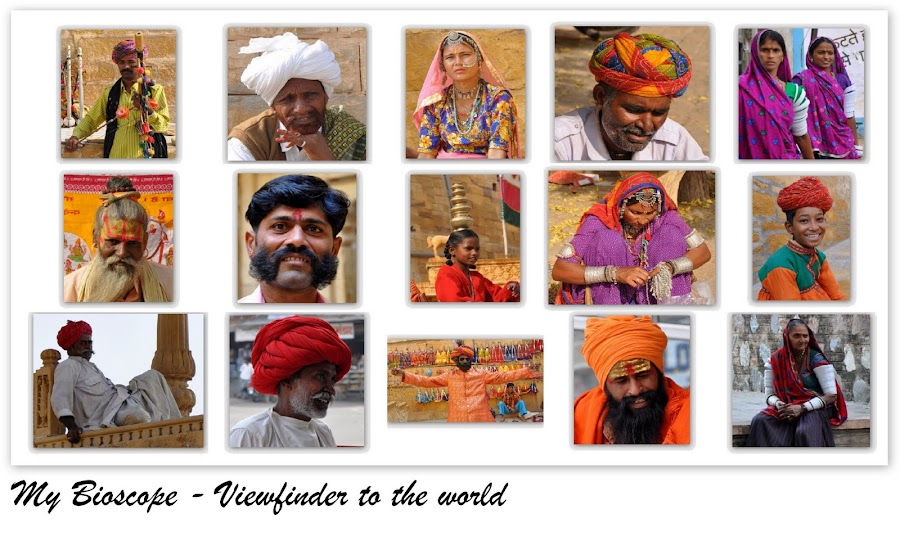The Royal Bengal Tiger is the magnet that attracts thousands of visitors every year to the Ranthambhore National Park. However, birds form an equally important part of the biodiversity of this park’s ecosystem and one cannot help but admire their beauty and melodious voice. In fact on occasions, when sighting a tiger proves elusive, bird watching keeps your spirit buoyed.
Ranthambhore National Park is home to about 270 odd species of birds – resident plus migratory. The presence of Aravali & Vindhya mountain ranges, Chambal & Banas Rivers, and the three main lakes (Rajbagh Lake, Padam Lake, Mallik Lake) make Ranthambhore an ideal location for a rich and diverse avi-fauna to thrive.
Even as one is out on a tiger safari, he gets to spot a number of birds - flying, perched on top of trees, drinking from water holes or wading in one of the lakes. Sometimes they even land on your vehicle! However, photography opportunities are limited since the vehicles seldom halt to permit you the luxury to admire a bird, unless one gets to spot a rare bird such as a Red-Headed Vulture or a Painted Sandgrouse. The prime objective on such safaris is the wild cat.
The outskirts of the park, near the hotel, are also good birding spots as quite a few birds venture out into these areas. The other convenient photography opportunity is a visit to the Ranthambhore Fort where one can leisurely stroll and admire the birds around. If one is lucky, he may even get to spot a raptor flying at eye level from atop the fort.
Most of the photographs I have managed to take have been near the water holes, where vehicles halt and wait patiently for a tiger that may come by. Some others have been taken near the Rajbagh Lake and Padam Lake (from the balcony of Jogi Mahal).
Some of the birds that I sighted most frequently at Ranthambhore National Park were the Rufous Treepie (one could even call it the mascot of Ranthambhore), Crested Bunting, Indian Peafowl (Peacock), Jungle Babbler, Red Vented Bulbul and White Throated Kingfisher. I had to barely strain my neck to see them. They seemed ubiquitous. Sightings, however, vary depending upon the zones one gets as well as the time of the year one chooses to visit. Winter season is the prime time for birding as during this time the park plays host to a large number of migratory birds.
Following is the complete list of birds spotted by me at the Ranthambhore National Park during my three day stay -
Long Billed Vulture, Purple Sunbird, Indian Cormorant, Painted Stork, Great Egret, Brown Rock-Chat, Laughing Dove, Spotted Dove, Rock Pigeon, Rufous Treepie, Brahminy Duck (Ruddy Shelduck), Black Winged Stilt, Black Drongo, White Bellied Drongo, Rose Ringed Parakeet, Jungle Babbler, Red Wattled Lapwing, Purple Heron, Little Heron, Indian Peafowl, Red Vented Bulbul, White Throated Kingfisher, Shikra, Painted Spurfowl, Grey Francolin, Oriental Magpie Robin, House Crow, Asian Paradise Flycatcher, White Naped Woodpecker, Black Shouldered Kite, Little Heron, Pond Heron, Eurasian Collared Dove, Indian Pitta, Yellow Footed Green Pigeon, Common Hoppoe, Intermediate Egret, Cattle Egret, Grey Heron, Common Myna, Oriental White Eye, Chestnut Shouldered Petronia, House Sparrow, White Browed Fantail, Red Collared Dove, Indian Silverbill, Great Coucal, Small Minivet, Red Headed Vulture, Crested Bunting, Large Billed Crow, Common Woodshrike, Barn Owl, Spotted Owlet, Great Thick-Knee, White Breasted Waterhen, Oriental Honey Buzzard, Great Tit, Pied Myna, Painted Sandgrouse, Brahminy Starling, Darter, Black Headed Ibis, Shikra, Green Bee-Eater, Common Iora, Common Greenshank, Indian Robin, Common Kingfisher, Asian Koel, Black Kite, Eurasian Golden Oriole. 



















6 comments:
Lovely Pictures !! I like your header too... quite an attractive layout :)
Regards,
~ Hemant Sonawane
professional Sculptor & Painter
Mumbai, INDIA
http://www.hemantsonawane.com/
http://hemantsonawane.blogspot.com/
@ Claudia - thanks so much for your comments. Will definitely check out the site.
@ Hemant - for a professional sculptor and painter to say those words...I am blessed to get those comments! Saw your blog. You are one talented person. I especially liked your thoughts on Art.Period. I wish you the best of luck in your endeavours.
The Legend..........i am impressed,bird birds and more birds,one of my favorites.Great to meet you greet you and read you in the blog world.
@Sapna: Many thanks :) I am glad you liked the post...pleased to meet you too...welcome to my blog!
Nice post, I am visiting Ranthambore next month, sad to hear that they don't stop the jeep to click the birds. I am not interested in tigers, but if they dont stop the jeep for birds then my visit is not worthwhile.
Thanks Sumeet for stopping by. Well, they do halt once in a while...particularly if the guide happens to sight a major bird (like the owl, red-headed vulture, osprey, dancing peacock, etc.). But, the tiger is always the first priority since that is what the other guests in your jeep would, presumably, be interested in. Also, the sighting of a tiger ensures a generous tip for the driver and the guide ;)
In your case, you should mention to the guide before-hand that you have a special interest in the winged-residents of the park. Also, ask him to spend some time looking out for birds towards the end of the safari. Another interesting option would be to hire a guide from the hotel (where you may be staying) and go for a walk along the periphery of the park or in some of the forest areas abutting the main park which don't require special permits.
Post a Comment
Thank you for visiting My Bioscope and I appreciate your valuable comments.
Please do mention your Name at the end of the message.